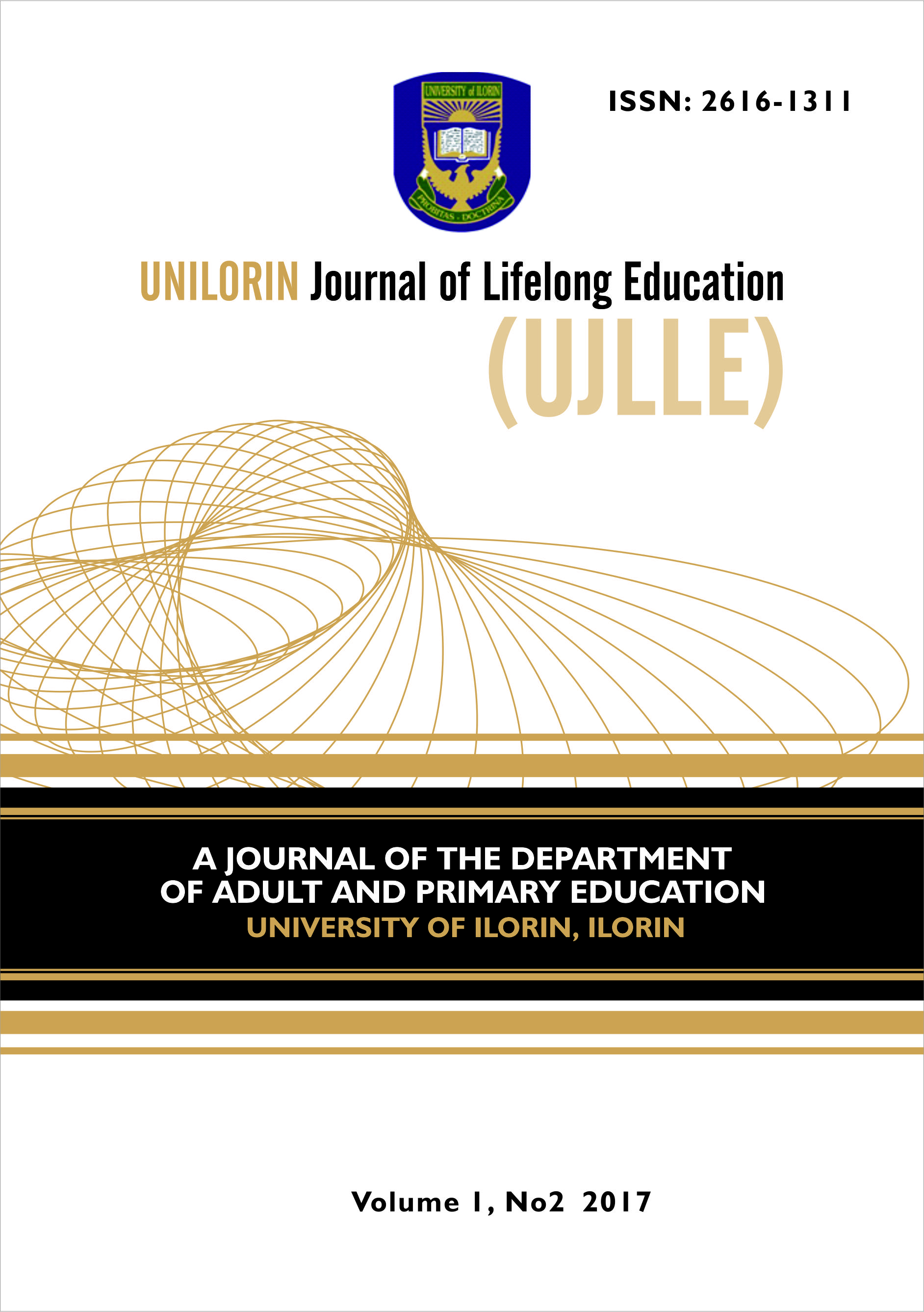EQUATING OF THE SENIOR SECONDARY SCHOOL WASSCE ECONOMICS MULTIPLE CHOICE TEST PAPERS (2011 AND 2015)
Keywords:
Ability estimates, Test, Equating, Horizontal Equating,, SSCEAbstract
Proportion of candidates passing at each grade of Senior School Certificate Examination (SSCE) in Economics varies from year to year. It is important that test scores obtained by candidates with equal abilities be comparable from one test form used in one year to another. This has necessitated a study of the comparability of test scores from different test forms over time. This study therefore focused on equating the Senior Secondary School WASSCE Economics Multiple Choice Test papers for 2011 and 2015. Specifically, this study investigated obtained empirical evidence of the (i) ability level of students as reflected by their scores in the 2011 and the 2015 multiple choice tests and (ii) horizontal equating of 2011 and 2015 WASSCE Economics multiple-choice test items. The Non-Equivalent Anchor Test Design of test score equating was used for this study. The sample for this study consisted of 650 students in SS2 selected from 14 senior secondary schools in Kwara Central Senatorial District through the use of multi-stage sampling technique. The 2011 and 2015 Multiple Choice Economics Test papers were adopted and used as instruments for data collection in this study. The data collected were analysed with the use of mean-mean and mean-sigma statistical tools. The findings of this study revealed that (i) the mean ability of sampled students in the 2011 and 2015 WASSCE Economics MCTs were of 0.12 and 0.13 respectively and (ii) a score of 4 in 2011 was found to be equivalent to 2.33 in 2015, a score of 10 in 2011 was equivalent to 7.54 in 2015, while 23 in 2011 was equivalent to a score of 22.63 for the MS in 2015. Based on the findings from this study, it was recommended that the exam body should continue to ensure that their scores are comparable in terms of item parameters while students and teachers of Economics should ensure that students are moved from medium to high ability levels.
References
Abiri, J. O. O. (2007). Elements of evaluation measurement and statistical techniques in education. Unilorin Press: University of Ilorin, Nigeria.
Adedoyin, O. O. (2010). Using IRT approach to Detect Gender Biased Items in Public Examinations. Educational Research and Reviews Academic Journal, 5(7), 385-399
Angoff, W. H. (1971). Scales, norms and equivalent scores. In R. L. Thorndike (Ed.), Educational measurement (2nd ed.). Washington, DC: American Council on Education. Belmont, CA: Wadsworth Group, 508–600.
Cook, L. L. & Eignor, D. R. (1991). An NCME instructional module on IRT equating methods. Educational Measurement: Issues and Practice, 10, 37-45.
Doran, N. J., Moses, T. P. & Eignor, D. R. (2010). Principles and practices of test score equating. New Jersey: ETC Princeton.
Grolund, N. E. (1998). Assessment of student achievement (7th ¬ed.). Boston: Allyn and Bacon.
Jaegar, R. M. (1981). Some exploratory indices for selection of a test equating method. Journal of Educational Measurement, 18, 23-38.
Jaeger, R. M. (1980). Some exploratory indices for selection of a test equating method. Journal of Educational Measurement, 18, 23-38.
Kolen, M. J. & Brennan, R. L. (1995). Test equating: Methods and practices. NewYork: Springer Verlag.
Kolen, M. J. & Whitney, D. R. (1982). Comparison of four procedures for equating the tests general educational development. Journal of Educational Measurement, 19(4), 279–293.
Kolen, U. (1994). Conditional standard errors of measurement for scale scores using IRT. Paper presented at the annual meeting of the National Council on Measurement in Education, New Orleans.
Millman, J. & Greene, J. (1989). The specification and development of tests of achievement and ability. In R.L. Linn (Ed.), Educational measurement (3rd ed., pp.335-366). New York: American Council on Education & Macmillan.
Olatunji, D. (2015). Analysis of Linear and Equipercentile Equating of Nigerian Senior School Certificate Examination Economics Multiple Choice Papers in Kwara State, Nigeria. Unpublished Ph.D. Thesis, University of Ilorin, Ilorin.
Olatunji, D. S. (2007). Effects of Number of Options on Psychometric Properties of Multiple Choice Tests in Economics. Unpublished M.Ed. Thesis, University of Ilorin, Ilorin.
Owolabi, H .O. (2004). Assessment in the classroom. In E.O. Ogunsakin (Ed). Teaching in Tertiary Institutions. (pp.93-99). Faculty of Education, University of Ilorin, Ilorin.
Petersen, N.S. Cook, L.L. & Stocking, M.L. (1989). IRT versus Conventional EquatingMethods: A Comparative Study of Scale Stability. Journal of Educational Statistics, 8. 137-156.
Schumacker, R. E. (2005). Test equating. Retrieved March 21st 2009 from http://www.appliedmeasurementassociates.com/ white%20papers/TEST%EQUATING.Pdf.
Xuan, T. & Rochellen, M. (2011). Why do standard testing programme report scaled score: Retrieved from http://www.ets.org/understandingtesting/glossary/.
